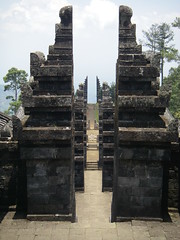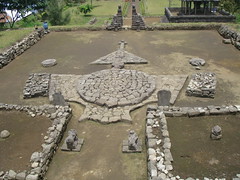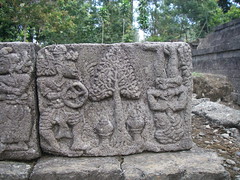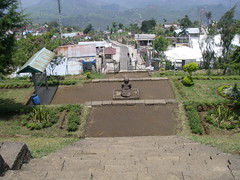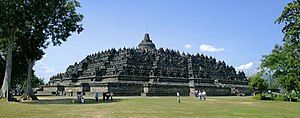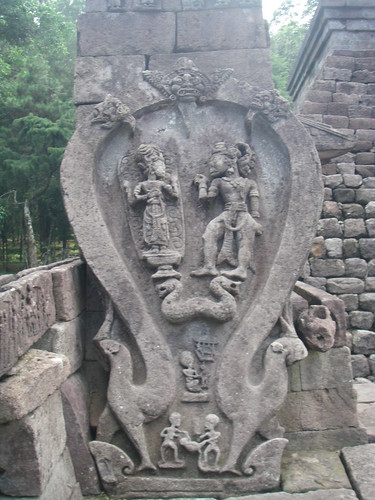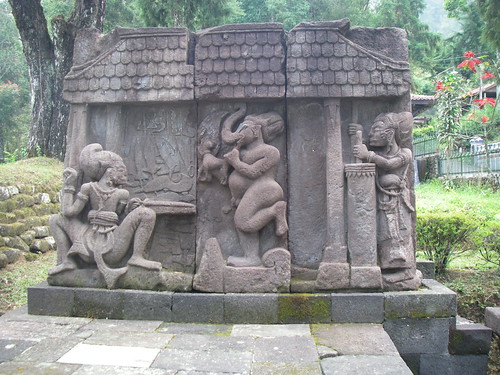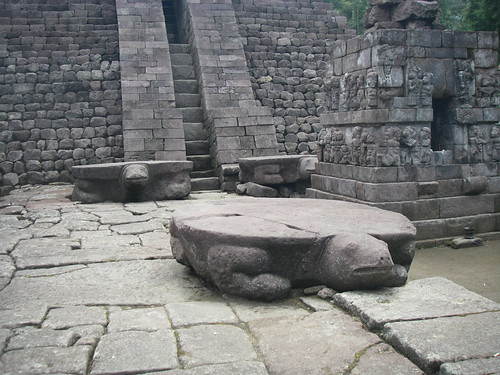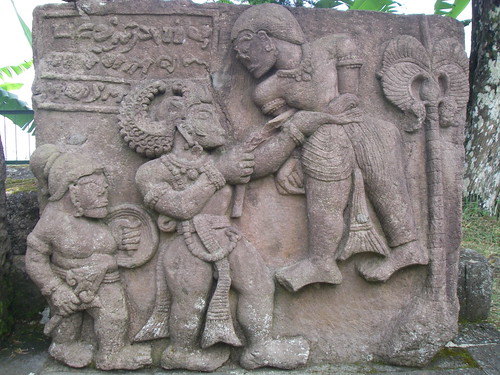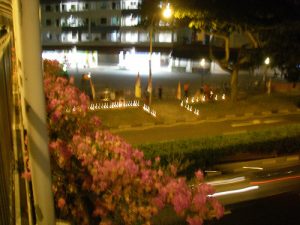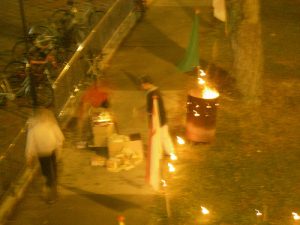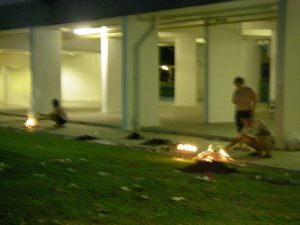Gilad Atzmon’s analysis of the Zionism strikes harmonious chords with other analyses of the psychology of fundamentalist Christianity, in particular with the latter’s self identity being grounded in a sense of natural worthlessness (consequence of sin) and in their belief that they can only become “whole” through fantasies that view others as inferior or worthless or evil. Compare the founding “ideals” of Zionism which include a desire to become “ordinary humans”, as if their self identity does not otherwise permit them them to see themselves as such.
Gilad Atzmon – the Wikipedia article
Gilad Atzmon’s website (including other articles)
From Delusion to Vindictiveness
Interpreting the Zionist Dream
By Gilad Atzmon
Early Zionism was indeed a cheerful dream, it was all about the transformation of the ‘Jew’ into a ‘civilised, respectful and authentic human being’. The founders of Zionism were inspired by the notions of ‘people like any other people’ and ‘nation amongst nations’. Reading early Zionists such as Nordau, Borochov and Gordon provides us with some very contemptuous references to Jewish character and identity that would make Nazi ideology look mildly liberal.
However, one is advised to take a short break for a second and to contemplate critically over the above Zionist dream. One may wonder what kind of people dream of ‘becoming human beings’. Can anyone imagine a French, English or Chinese man or woman who dreams of becoming an ordinary ‘human’? We can easily think of oppressed human beings who demand to be treated as humans (Palestinians, Civil Rights movements, anti Apartheid and so on). Yet, the Zionist dream is rather different. It is not just about the desire for recognition or equality, it is not just about being treated appropriately, it is also a dream of ‘self-transformation’. In fact, it is all about a miraculous metamorphosis from a morbid ‘abnormal’ state of being into an acceptable decent human form.
Within the context of a fictional fable we can easily imagine a cow that fantasises to become a dairy farmer, a pig who ‘dies to’ become a Kosher schnitzel, a snake who aspires to take over the Labour party and then to launch a new Zionist illegal war. And yet, it is pretty unusual to think of people who have managed to develop an aspiration to become ‘ordinary humans’.
An intelligible way to explain or interpret that very unusual dream is probably to assume that those who succumb to the Zionist dream are those who happen to believe that, as far as their natural state of being is concerned, they are indeed remotely human. One would rightly assume that those who dream to become humans must be convinced that humanity is somehow not exactly a characteristic that they happen to possess.
Yesterday during a talk at Librairie Résistances, Paris (a fund raising event for Gaza) I was asked for my interpretation of Israeli ‘evolving barbarism’, how is it possible that 84% of the Israelis supported the IDF genocidal crime in Gaza last December. “In order to understand how these Israeli murderous practices emerged” I said, “all we have to do is to trace back and reread the early Zionist ideologists.” We can easily learn from Zionist thinkers about their ‘dream’ and their vision of their fellow brothers. They, the founders of modern Jewish nationalism happened to admit somehow that something was totally corrupted within the Jewish identity, culture and character. However, they genuinely believed that it was amendable.
Zionism was there to bring about a new Jew, a civilised productive human being. It was indeed a very wet and epic dream. As an Israeli youngster I myself succumbed to this dream. I tended to believe that Israel was ‘my’ historic land, I regarded the Biblical protagonists as my direct ancestors. I was sure that, at least in the case of the so called ‘first Israelis’, the ideological transplant operation was a great success. We, the young Israeli natives tended to believe that we were all nothing less than a success story of ‘modified-civilised-humanist-secular-beings’.
Needless to say that the history of Palestine, the Palestinians and the Nakba was totally hidden from us. We didn’t see the Palestinians around us either, we were hardly aware of their suffering not to say their cause. We were in fact totally blind. We tended also to believe that our army was the ‘most humanist army around’. We grew up with the ‘1967 Victorious Diary’, a legendary chunky photo album every Israeli held in a prominent location on his book shelve. There in that glossy propaganda book an Israeli soldier was giving his water to an Egyptian prisoner. We regarded him as a symbol of our people’s endorsement of universal humanism. We were obviously not aware of the horrendous fact that the Sinai Desert was actually a slaughter field for hundreds of Egyptian POWs. Why didn’t we know? This in itself is a very good question. Our fathers who fought in this war must have known something but they kept quiet. Our parents who witnessed the 1948 convoys of Palestinians refugees should have known something about the Nakba but they somehow kept quiet. Interestingly enough, it wasn’t just our parents, we followed the exact same pattern. Once we ourselves matured into IDF soldiers, we did exactly the same, we turned a blind eye (1982 in Lebanon). And this has never changed. The Israeli moral awakening has never happened. By now I allow myself to argue that it won’t happen. The Zionist dream is just too comfortable. After more than one hundred years of moral phantasmic delusion the Israelis are deeply stuck in an ethical coma.
The Zionist dream of a ‘humanist metamorphosis’ has never matured into reality or practice. Quite the opposite, Israelis and Zionists have learned to see themselves through a phantasmic illusionary prism. Rather than being transformed into humanists for real, they have become ‘leading humanists’ in their own extreme judeo-centric dream.
Freud taught us that the dream is there to prolong the sleep: a siren, a baby cry and a dripping tap that takes place in the outside would be incorporated into the dream so we can keep snoozing. The ‘Israeli humanist dream’ operates in a similar manner, it is there to prolong the Zionist snore, it is there to keep Jews aloof to the crimes that are committed by their state, and in their names. The disturbances that come from the ‘outside world’ such as the Goldstone report or Ahmadinejad’s valid criticisms are incorporated into their dream as ‘white noise’ motivated by ‘pathological antisemitism’. Though in reality the Jewish state is barbarian with no comparison, in their dream, it is nothing but ‘business as usual’.
The daily reality of Israeli barbarism in Palestine should bring us back to elaborate over the Zionist dream of transformation. In spite of the great promise, the Jewish state has failed to become a ‘nation like other nations’. Similarly, the Zionist people are not exactly ‘people like other people’ for no other people approve genocide collectively.
The Jewish state that was supposed to be a celebration of identity transformation became instead the ultimate embodiment of the morbid symptoms Zionism was there to heal. Israel has already managed to surround itself by gigantic ghetto walls, it spits fire and WMD on its indigenous population. It locks millions in concentration camps and starves them. As bizarre as it may be, only in the face of Israeli colossal barbarism, can one adequately understand the full meaning of the irony of the Zionist dream of humanist metamorphosis.
Zionism was doomed to fail: it is a blood related project, it is racially orientated and it is supremacist to the bone. The Zionist dream has become a true devastating nightmare for real: the Golem* Jewish State wakes up every morning to commit more and more crimes in the name of the Jewish people. With an arsenal of hundreds of nuclear bombs and motivated by a phantasmic Holocaust religion that preaches nothing but vengeance, there is no greater danger to humanity, humanism and our civilization than Israel and its lobbies around the world.
All I have to say is beware!
*Golem – a Yiddish Frankenstein
Like this:
Like Loading...


